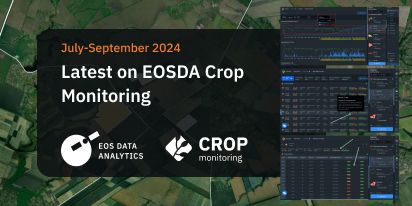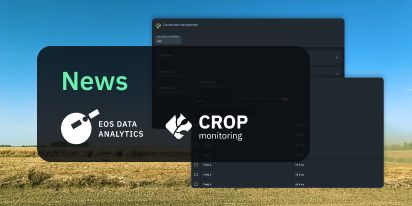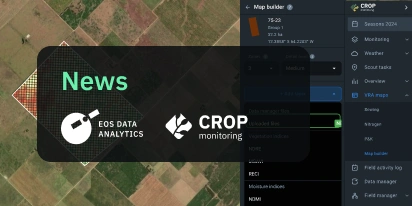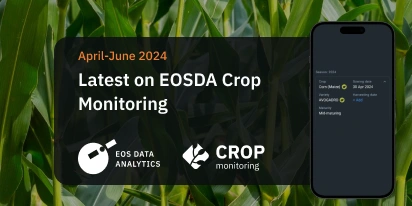How To Grow Flax And Get Increased Yields
Flax (Linum) is a genus of plants in the Linaceae family. It’s both an annual and perennial crop. People started growing flax more than 5 thousand years ago. The Egyptian priests wore linen clothes, and the mummies of the pharaohs were wrapped in the finest linen fabrics that have remained to this day. Flax plant is used in various industries: as animal feed, for creating medicines, and for making fabrics. Medical and technical industries value its seed for oil, which contains butyric linolenic acid.
There are more than 100 different types of flax plants, but common flax (Linum usitatissimum) is the most widespread. There are 2 most used varieties of this type, the representatives of which are in the highest demand:
- Long-stalked flax (Fiber flax)
- Linseed (Seed flax)
Long-stalked flax (Fiber flax)
Fiber flax is primarily grown for creating fabrics and threads, but can also be used for field retting. The average fiber content in the stems is 20-30%. The plant has a high stem (120 cm on average) and blooms with blue inflorescences. Pollination of the plant occurs by both insects and via self-pollination. Fiber flax seeds are flat, ovoid, with a shiny brown surface.
Linseed (Seed flax)
This type of flax seed is grown worldwide for the oilseed as its seed’ fat content is up to 47%. The seed is used for human and animal consumption. This flax type belongs to the category of low-growing plants with highly branching stems. The plant’s seeds are larger in size, compared to the seeds of fiber flax.
Flax is grown in semi-arid steppe regions, for example, in Kazakhstan, the south of Ukraine, and the North Caucasus. Among other top producers of seed flax are India, Argentina, the USA, and Canada. The seed is grown to be used as a source of oil, a demulcent and emollient, and as a dietary supplement. Different flax varieties are grown for human consumption and as animal feed. Although flax is the oldest edible crop, it has only recently been widely recognized for its unique nutrient components and its potential to prevent several human diseases.
Fiber flax is mostly grown in European countries, with France, Belgium, and the Netherlands being the biggest producers. The leading exporters of linen fabric are China, France, and Belgium.
Use EOSDA Crop Monitoring in Kazakhstan, Argentina, the USA, and Canada to manage your flax field.
Flax soil and temperature requirements
Flax grows best on moist, loamy soils of medium density, which should be loose and water permeable. The crop grows worse on sandy soils. Heavy clay and acidic soils are not suitable for growing flax at all. The field must also be protected from strong winds. Soil temperature must reach at least 7-8 ° C. The optimal temperature for flax development is from 15 to 18 ° C.
Due to its well-developed and deeply soil penetrating root system the plant is quite resistant to periodic water shortages. It gets enough moisture from the air and soil. Thus, flax can be grown in areas with low annual rainfall (440-490 mm).
Flax position in crop rotation
There are no special requirements for the cultivation of flax regarding crop rotation. But although the crop is easily integrated, it prefers soils after root crops the most, as they are usually free of weeds. The best soil for growing flax is the one after clover or legumes.
Here are the main stages of the flax life cycle.
1. Germination
This is the first of flax growth stages. It starts with seed imbibition and root emergence from the seed. The stage ends when the coleoptile breaks through the soil surface.
2. Leaf development
This is the stage when the first leaf of the plant unfolds. The stage lasts till at least 5 leaves unfold.
3. Inflorescence emergence
At this stage, the flower buds become visible. The stage lasts till the first flower petals are visible.
4. Flowering
This is the stage when the first of flax flowers open. The flowering continues till the fruit set is visible.
5. Development of bolls
This is the stage when the bolls reach their final size. The stage lasts till nearly all bolls reach their final size.
6. Ripening or maturity of fruit and seed
This stage of flax life cycle is manifested in the beginning of ripening or boll colouration. The stage lasts till both boll and seed show fully ripe colour.
7. Senescence
The last one of flax growth stages when the plant is ready for harvesting.
Successful flax planting is a combination of two components: soil moisture and correctly selected sowing dates. Land preparation for sowing flax seeds begins in fall. The best predecessors for flax are winter and spring grains, potatoes, and legumes. After the previous harvest has been completed, preparation is carried out in 2 stages:
- Stubble plowing (tillage to a depth of 6-8 cm)
- Deep plowing (to a depth of 20-22 cm) 2 weeks after the previous stage
When preparing land for farming, keep in mind that the optimal type of soil for growing flax is medium loamy soil with a deep arable layer, a lumpy structure, and low acidity. Sandy and clayey soils are considered less suitable for the cultivation of flax. After plowing and before the first freezing, two more cultivations are carried out with a depth of 8 -10 cm.
Another crucial factor to consider is that flax is a moisture-loving crop. Use EOSDA Crop Monitoring to track soil moisture content that is most suitable for flax planting.
If arable and well-fertilized land for planting flax is prepared in fall, the crop can be sown in early May, under warm weather conditions. Thus, early sowing can be done on May 5 – 9th, middle sowing on May 12 – 15th, and late sowing no later than May 20 – 25th. Keep in mind that these general flax growing season rules require verifications in each individual farming area.
When deciding on when to plant flax seed, consider that early sown flax is frequently subject to drought, which finds it halfway through its development. But late sown flax, having fallen under the same drought at the beginning of its growth, may still recover after it rains, and will reach its present height. However, it will give hard fiber and few seeds.
Early sown flax also shows better resistance to diseases that affect both the seed and the fiber. In general, flax loves wet weather and moderate warmth, especially at the beginning of its growth. That means it’s best to plant flax during a rainy spring. Besides, if you plant flax seed in a well-fertilized and deeply loosened arable land, the plant tolerates frosts of 2 °C -3 °C. And although the vegetation will suffer a little after such a frost, the roots will continue to develop, and flax will get better and grow quickly when the warm weather comes back.
Use EOSDA Crop Monitoring to help you decide whether your field is ready for flax planting.
Before planting flax seeds, it is critical to prepare them. The seeds chosen for sowing must have a purity of at least 99%, germination of at least 95%, humidity not more than 12%, and fusarium infestation of not more than 1%. Before sowing, the seeds must be treated with fungicides against fungal diseases.
The sowing rate of flax seeds depends on the soil and climatic conditions of the cultivation area, the applied fertilizers rates, the resistance of varieties to lodging, and the industrial purpose of sowing. It usually ranges from 110 to 140 kg per hectare, or even higher for the varieties with larger seeds. Keep in mind that on more fertile soils, sowing should be 5-10% thicker. Plant the seeds into the soil to a depth of 1.5–2 cm. The distance between rows must be about 20 cm.
When planting flax seed, the sowing quality should be monitored. Farmers check the depth of seeding and the width of the row spacing. The presence of seeds on the soil surface is not a good sign.
See your fields’ productivity zones on EOSDA Crop Monitoring to distribute the seeds across the field efficiently when planting.
Fertilizers significantly increase the yields of flax. They are applied taking into account the characteristics of the soil and the predecessors in crop rotation.
The most used flax fertilizer is nitrogen. It’s usually applied in spring during pre-sowing soil treatment. But on fertile soils, nitrogen fertilizers should be applied later and only if the plant develops poorly.
Other important flax seed fertilizers are phosphorus and potash. They are applied in two steps: partly in fall and then in spring, preferably before pre-sowing soil treatment. On acidic soils, it is preferred to apply superphosphate as an acidic fertilizer.
Potash fertilizers also can be applied to improve the quality of fiber, ensure better seed formation, and counteract crop lodging, especially if there is nitrogen excess.
On dark-colored, highly podzolic, and excessively calcareous soils, where the crop often suffers from bacteriosis, magnesium boron fertilizer should be applied at the rate of 15-20 kg per hectare or 3-6 kg of borax per hectare before sowing.
Along with mineral fertilizers, organic fertilizers should also be used. If there is a shortage in mineral fertilizers, the doses of organic fertilizers can be increased. Organic-mineral fertilization has a great effect, especially on soils poor in organic matter.
Easily define field productivity zones in EOSDA Crop Monitoring to distribute flax fertilizers rationally.
As a water-loving crop, for the formation of a unit of dry matter, flax consumes 400 – 430 m² of water during the growing season. That is why, flax watering is first carried out before sowing to ensure the soil moisture level is high enough for the seeds to germinate. Keep in mind that although constant flax irrigation ensures the best flowering display, reducing irrigation provides faster plant maturity. To ensure better growth, water the plant regularly during dry weather to make sure that the soil is constantly moist but not sodden. If growing flax for seed or fiber, it is better to reduce irrigation after the seed heads form, watering the plant only when the top inch of soil is dry.
The right way to water flax is to rely on soil moisture levels, the weather in a particular region, and crop development according to growth stages.
Here are the most common pests affecting flax and the ways to protect the crop from them:
Flax flea beetle
This flax pest damages the leaves of young plants. The beetles feed on soft outer tissues, but also affect deep tissues, disrupting the fibers. Eventually, the pest causes severe damage to crops quality and decreases the yields of fiber and seeds.
Protection measures:
- Early sowing
- Fall plowing
- Crop rotation
- Insecticides treatment
Silver Y
This pest causes significant damage to fiber flax. The cutworm appears on plants during flowering and feeds on the stems of the plant.
Protection measures:
- Herbicides treatment
- Weed control
- Deep fall plowing
- Early sowing
Flax moth
This cutworm feeds on unripe seeds, causing significant seed losses.
Protection measures:
- Early sowing
- Selection of early-maturing varieties
- Harvesting in the phase of early yellow ripeness
Flax thrips
During the period of rapid plant growth, adult thrips damage the upper part of the stem, sucking out juices from plants. This flax pest causes a decrease in seed oil content and affects fiber quality.
Protection measures:
- Hulling after harvesting
- Deep early fall plowing
- Early sowing
- The use of mineral fertilizers
Use EOSDA Crop Monitoring to assess the condition of your field and take pest protection measures in a timely manner.
Here are the most common flax diseases and the ways to protect the crop from them:
Fusarium wilt
The symptom of this disease is the browning of the stem and darkening of the root, leading to the death of a plant. The rapid spread of the disease is facilitated by warm, humid weather, and acidic soils. In humid weather, the disease quickly develops on lodged plants.
Rust
This disease affects plants from germination to full ripeness, especially at the stages of flowering and green ripeness. Rust manifests itself in yellow-brown spots on flax leaves, which later turn into winter spores and cover stems with black glossy spots. Warm, humid weather contributes to the intensive development of the disease. Besides, it is not recommended to sow flax late or overapply nitrogen and organic fertilizers.
Canker
This disease develops in different stages of plant’s development. Infected seeds and soil are considered the main sources of the infection. The disease causes a decrease in seed germination, loss of seedlings, suppression of growth, and the formation of different layers, which affects the quality of fiber.
The most effective measure against most flax diseases is pre-sowing seed treatment. For instance, fungicides can suppress the development of a complex of diseases transmitted with seeds, strengthen the immunity of plants, and increase their resistance to negative environmental factors (harmful organisms, weather conditions).
To access your crop’s health based on vegetation indices, use EOSDA Crop Monitoring.
When harvesting flax, it’s crucial to consider its uneven ripeness, which greatly complicates the harvesting process. This crop can be harvested by both direct combining and swathing. The optimal time for harvesting flax seed by swathing is when 60-75% of the bolls are fully ripe, which is 5-6 days earlier than if harvesting by direct combining.
To see when your field is ready for harvesting, consider that this crop has three stages of maturity, depending on the variety:
- Early maturity
- Mid-early maturity
- Late maturity
The color of bolls is what helps to determine the time for flax harvesting. If it is grown for the purpose of obtaining fiber, the harvesting is carried out during the mid-early (yellow) maturity. During this period, 50% of the seed boxes turn brown or yellow-green color, and the other half becomes yellow. This period lasts from 7 to 10 days.
If flax is grown for oil production, it is harvested when green bolls (early maturity) make up no more than 5% of the field, meaning most of the plants have reached mid-early maturity. Usually, this period falls on the last month of summer.
The duration of the plant’s maturity phases depends on its variety, soil, and climatic conditions. The highest yield of fiber of the highest quality is obtained when flax is harvested in the phase of early or mid-early maturity.
Crucial factor in predicting flax seed yield is the flax type itself. Choosing the right plant’s variety is critical for a successful cultivation. Thanks to the work of breeders, the potential yield of the crop and the quality of products made from it are constantly increasing. Flax seed yield depends on how the particular variety matches the local weather conditions, its resistance to diseases, pests, and other stress factors. If the yields of old flax varieties were at 1.4 – 1.8 t / ha at most, the average flax seed yield per hectare for modern varieties is from 1.8 t to 2.5 t. Overall, the average flax yield in 2020 is at 1200 to 1400 pounds per acre.
Compared to other oilseed, flax is characterized by high prices, on both the domestic and global markets. Besides, due to a short growing season, agricultural producers can profit from selling flax already in July – August, when the natural risks of not receiving a harvest are reduced. Besides, flax is a good precursor in rotation for most crops, including winter wheat. This fact makes it a perfect insurance crop in case of winter crop deaths and also influences its demand and price.
Flax price per bushel hasn’t drastically changed since 2013 and ranges from $12 to $15, depending on the harvest and export capacity.
High flax yields depend on many factors that the farmers should consider.
Soil fertility
First step in improving soil condition is fertilization. Additional nutrients will promote the growth of flax plants and increase the resistance of crops to changeable weather conditions and various diseases.
Another important factor is the use of advanced technologies and modern agricultural machinery in soil cultivation, including carrying out anti-erosion measures to combat the destruction of the upper soil layers.
Right sowing time
Choosing an optimal sowing time will increase crops resistance to pests and diseases, resulting in higher yields. To determine the best time for sowing, consider its compliance with the climatic zone of your location, paying special attention to the soil temperature and moisture.
Use of high quality seeds
Choose the most productive varieties as they are most likely to provide high yields. Besides, carry out seed treatment to accelerate plant growth, facilitate harvesting, and increase yields.
Crop rotation
Proper crop rotation will help replenish soil nutrients, protect soil from erosion, and prevent the spread of pests and diseases, leading to higher yields.
Use EOSDA Crop Monitoring to manage your flax field remotely, tracking the changes that may influence yields to react accordingly when needed.





